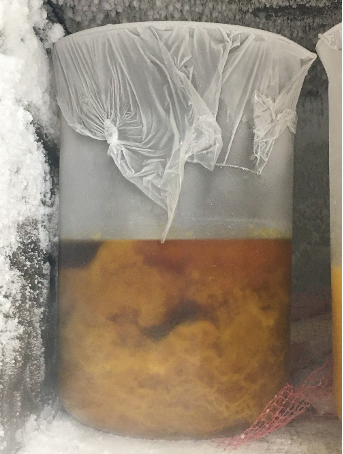Subscribe to our Blog

Carrier Solvents in Extraction:
Ethanol vs Butane
It is true, both Ethanol and Butane (also referred to as Hydrocarbon) can be used to extract oil from cannabis and hemp. When considering which solvent to use, a processor should carefully review the safety, efficacy and working history of a given solvent in application. Operating costs can be masked and provide a false positive to select a solvent because it is less expensive to purchase, when, it is more expensive to use. This blog will explain some of these differences between Ethanol and Butane and will help guide a processor to make more informed and better decisions regarding extraction methods and carrier solvents used in these same extraction methods.
Ethanol |
Butane |
|
Ethanol is an Organic Chemical Compound. It is a simple alcohol with the chemical formula C2H6O. Ethanol is liquid at room temperature. |
Butane or n-butane is an alkane with the formula C4H10. Butane is a gas at room temperature and atmospheric pressure. Butane is an easily liquified gas that quickly vaporizes at room temperature. |
|
|
|
TRADITIONAL USES |
|
Ethanol |
Butane |
|
|
From the above analysis, ethanol as compared to butane is:
- A safer solvent
- A proven solvent in food, medical and human applications/products
- A more flexible solvent
- A preferrable solvent to recycle
These are benefits ethanol provides, whereas butane in general cannot provide or does not offer.
When selecting a superior solvent, the extraction method itself is wise to carefully evaluate. Most methods utilize a “piece or type of equipment” that performs extraction. This extraction equipment then needs to be supplemented by extracation equipment, filtration equipment and evaporation or distillation equipment. This adds potential variability to process and cost to production.
Integrated and advanced systems perform these functions, converting plant or biomass into a winterized, filtered, oil/concentrate, beginning to end. Below is a picture of frozen BHO/Hydrocarbon concentrate compared to ethanol concentrate.
 |
 |
| Butane Concentrate Not winterized, good yield |
CannaTrue™ EPD Ethanol Concentrate |
By using the advanced CannaTrue EPD System, your oil concentrate will be fully winterized, extracted, filtered, then ready for next steps.
All with superior yield and absent of operator interaction, meaning the EPD System is fully automated (“labor light”). Processors can also set the system to produce a purged concentrate and decarb the oil as well.
The EPD System takes advantage of the inherent advantages of ethanol through recovery and reuse, reducing a processor’s operating costs.
Ethanol is a solvent offering significant use advantages, while mitigating variability and processing risks which are introduced into production environments by such solvents as butane and other hydrocarbons. The use of ethanol coupled with processing utilizing an integrated, the closed-loop CannaTrue EPD System produces a superior concentrate product.
Learn More
At CBG Biotech, we rely on a set of customer-first core values that promote ethical and honest behavior, personal accountability, and teamwork to deliver the solutions that set customers up for success. If you have a question or would like more info, please call 800-941-9484 (and press option 3 for support) or get in touch with us online today!
Check out these other helpful resources:
- Blog: How to Maximize Cannabis Extraction Yield in Your Lab
CBG Biotech provides tips to improve your cannabis extraction techniques in order to maximize cannabis extraction yield in your lab. - Blog: Increase Your Production Capacity with SolvTrue™ Solvent Recyclers
CBG Biotech provides the benefits of using SolvTrue™ Solvent Recyclers to recover industrial organic solvents in order to increase production capacity. - Video Series: How Do the CBG Biotech CannaTrue™ Systems Work?
CBG CannaTrue™ SRS Series and EPD Systems process and extract essential oils while capturing the desired cannabinoids and some terpenes from cannabis and hemp. Our solutions are at the forefront of helping provide clean, effective yields and concentrates for those who need them most.



COMMENTS